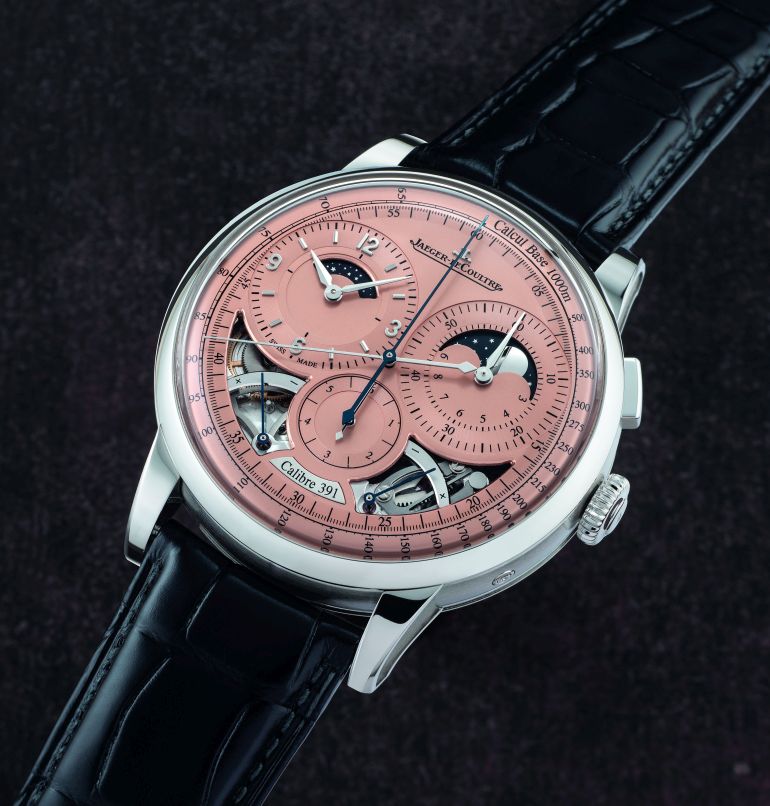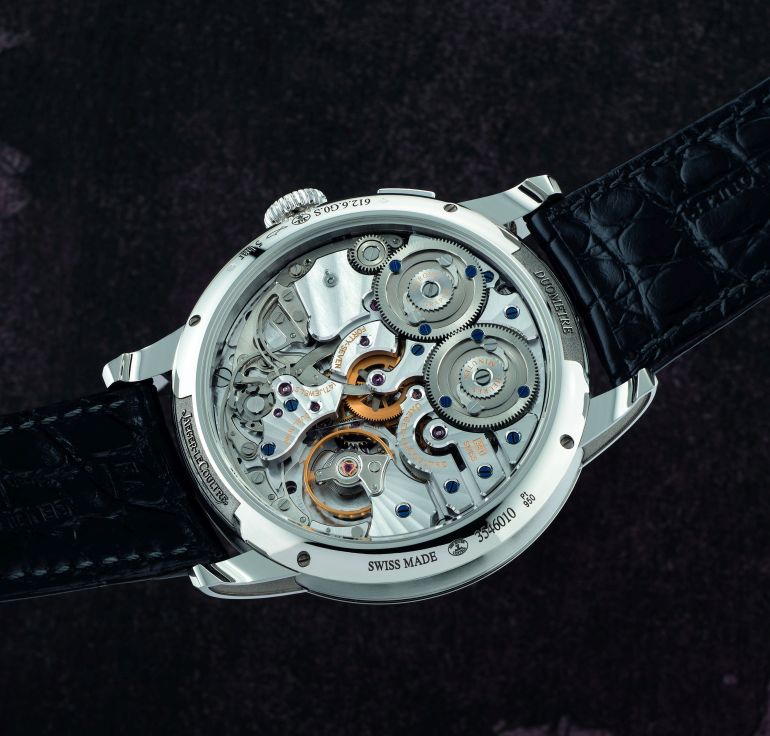Jaeger-LeCoultre returns to the concept of precision that underlies its Duometre technology: the Chronograph Moon features a redesigned case and a new movement.
Entrusting a traditional movement with the task of guaranteeing, in addition to the time display, the operation of an additional complication can compromise its accuracy. This was the consideration from which the technicians of Jaeger-LeCoultre at the beginning of the new millennium and in 2007 an unprecedented complex concept was born, the result of years of research, innovation and refinement.
The Duometre, in fact, consists of two autonomous, non-interacting mechanisms, each with its own energy source. Two barrels and two independent wheel trains, one for the time display, the other for an additional function. The only common element is the regulatory body, which is responsible for synchronising the two mechanisms on the same time basis. A sophisticated mechanism that allows watches with complications to avoid any negative influence on running accuracy. At the debut of the Duometre, the additional function was the chronograph, followed later by other complications: moon phase, travel time and tourbillon. This year, Jaeger-LeCoultre revisits the collection and introduces new movements. Like the Chronograph Moon with its unprecedented combination of chronograph function and moon phase.
Jaeger-LeCoultre's Duometre concept combines a single-pusher chronograph with moon phases
The new Duometre case, inspired by Jaeger-LeCoultre's historic 19th century savonette pocket watches, combines tradition and contemporary elegance.
The redesigned case consists of 34 components, in which the profiles are bevelled, the bezel is rounded and the sapphire crystal is convex. Each element, therefore, tends to accentuate the roundness; only the end of the lugs presents more taut lines. The lugs, then, are screwed and not integrated to allow for a better workmanship of the finishing, which alternates between polished, brushed and micro-blasted surfaces. The crown, too, has been redefined with a bevelled, deep indentation that enhances comfort in use.
The Duometre Chronograph Moon beats to the rhythm of the manual 391 calibre. Each mechanism, the one for the hour display and the one for the complications with a seconds foudroyante device, is powered by its own barrel (which ensures a 50-hour power reserve). The so-called 'lightning seconds' are a special and rare function that allows an extraordinarily precise division of the second into its fractions (in this case 1/6th of a second).
Duometre Chronograph Moon: platinum case and opaline copper-coloured dial
With the Duometre, Jaeger-LeCoultre combines sophisticated complications with exceptional precision.
The dichotomy between time base and complications, typical of the movement, is also reflected in the architecture of the dial of the Duometre Chronograph Moon, opaline copper colour in the platinum version. A On the left we read the hours and minutes with an integrated day/night indicator, on the right on a similar dial, where the moon phases are also included, we can read the chronograph data: hours (up to 12) and minutes (up to 60). At 6 o'clock is the dial for the foudroyante function. In the centre are the continuous seconds hand and the chronograph seconds hand (blue). At the bottom, a window opens onto the movement: here, the two power reserve indications are visible, for each of the two barrels.
If the Reverso remains the icon of Jaeger-LeCoultre, the most recognisable, and also most loved, watch, it is also true that around it the brand has built and developed all possible expressions of its technical prowess and watchmaking culture. And the Duometre is one of them.
Price98,000 euro.








